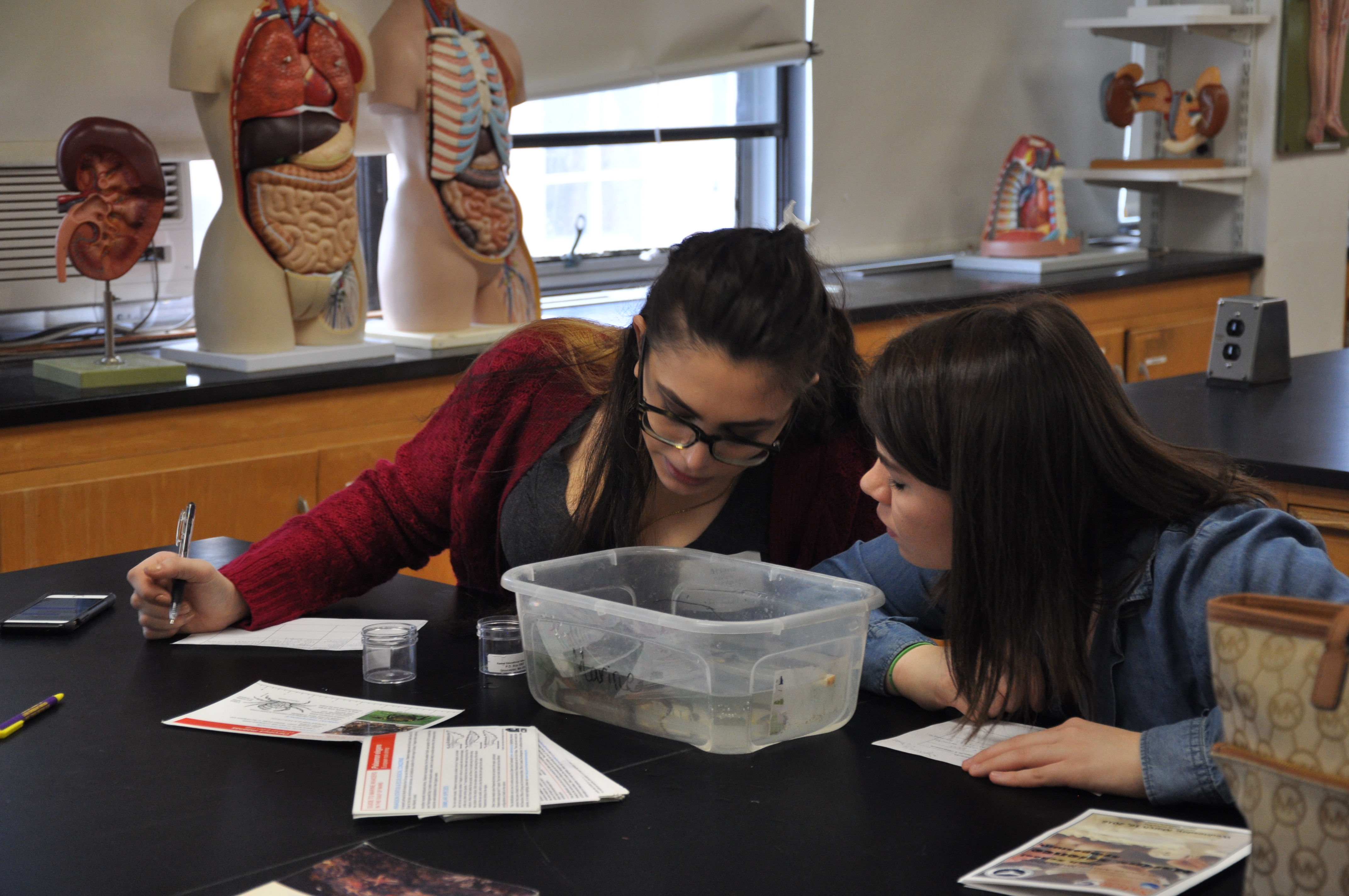by Joe O’Connell
During Nadia Aamoum’s six-month international co-op in the island nation of Seychelles, north of Madagascar, the ocean was her workplace. She regularly conducted research dives off the coast of Mahe Island to survey fish, coral, and invertebrate populations.
“We don’t know that much about the marine environment,” Aamoum explained. “We know more about the surface of the moon. There is just such great intrigue, and diving is the best way to get down there.”
A marine biology major, Aamoum has been diving for five years and has her open water diving certification. She first learned to dive at a resort in Kenya her family visited.
“I find it really relaxing,” Aamoum said of diving. “I know that’s a little strange for a person to find breathing underwater relaxing.”
While in Seychelles, Aamoum conducted line intercept transect dives, which are used to estimate the cover of a species on a coral reef, and stationary point counts. Aamoum said she studied fish population because it interested her the most.
Aamoum said her experience in Seychelles helped prepare her for the next phase of her collegiate career: Northeastern’s Three Seas Program.
The program, which celebrates its 30th anniversary this year, is based out of Northeastern’s Marine Science Center in Nahant. It gives students an unprecedented experiential-learning opportunity by bringing them to three different marine ecosystems in the Western Hemisphere over the course of a year.
“The program allows students who have a passion for marine biology to really focus and get exceptional field, laboratory, and classroom experience,” said Liz Bentley, the program coordinator and dive safety officer. “So it will hopefully allow them, in the end, to find their real passion within the field.”
Students spend the fall semester diving and taking classes in Nahant. They then spend 10 weeks during the winter at the Smithsonian Tropical Research Institute in Panama, studying the tropical ecosystem there. The program then moves to Friday Harbor in Washington state for eight weeks where students research rocky intertidal habitats and a sub-tidal kelp forest.
“It’s the premiere marine biology research experience,” said Steve Vollmer, the faculty head of the program. “There is nothing else like it.”
Aamoum started the program this fall and said this opportunity was a key factor in her decision to attend Northeastern. So far, she’s enjoying the program’s challenging curriculum and activities. She said Nahant’s colder water temperature and vastly different aquatic environment has been an adjustment to that of Seychelles. “It has taken a little getting use to. As a group we are all getting better.”
Both Bentley and Vollmer are alumni of the Three Seas Program and said it has started the careers of many prestigious marine biologists.
This academic year there are 23 students in the program—15 undergraduates and eight graduate students. Undergraduate students typically do the program during their fourth or fifth year at Northeastern. Graduate students are also required to do a six-month internship.
Bentley said this year’s class is one of the largest in the program’s history. “I think the master’s degree component is drawing a lot of people and is becoming more known,” she said, “and the marine biology major at Northeastern helps a lot for sure.”
Science writer Angela Herring contributed to this report.
Originally published in news@Northeastern on October 8, 2013.

